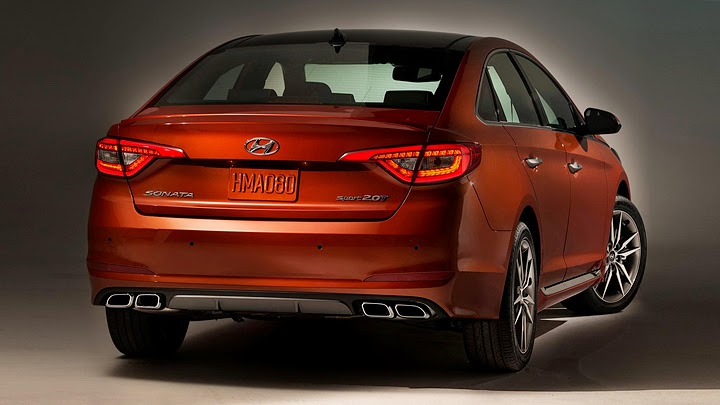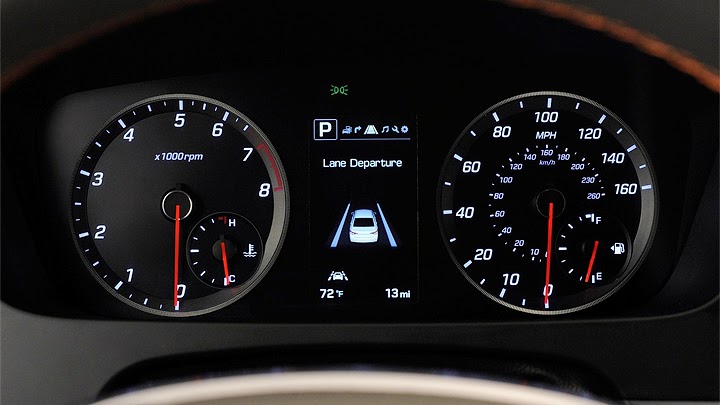
One of the most important rules concerning car design is that extravagant looks age faster. Hyundai needed to go as extravagant as possible with the current Sonata because it was intended to introduce a whole new phase of the automaker, rather than just a design language. The Koreans invested on improving the entire quality of their cars because this is the best way for their image to end doing the same. They’ve never been known for producing bad vehicles or anything like that, but they didn’t have a “thing” of their own. They were always just as competent and reliable as their direct competitors, but disturbingly uninspired. This was the point which needed the automaker’s biggest attention, which was finally granted for the first time six years ago.
Working with designs like what you have seen on every Hyundai released since then was a great move because it managed to take everybody’s attention. And since the company was already prepared, with much better products, it was just a matter of time for converting all those spotlights into hundreds of thousands of sales. However, it could never forget that this strategy is tricky. Dealing with how people will see a given car years after its release is important because it’s strongly related to how its sales will progress in the same period. Models like Veloster or Elantra started to depend mostly on emotional values, like their image of being modern and trendy. So if they spent too much time without new changes, they would simply end declining once again.







This is why Hyundai took a different direction even though it’s still on a comfortable position. It started with the latest i30, Santa Fe and Genesis, and consists of perfectioning the vehicles, to keep it short. The easiest way of noticing that is placing the new car side-by-side with the outgoing: the new Sonata might not be as revolutionary, but it makes its predecessor look weird and older than it actually is. Investing on straight lines and more regular shapes aids to a very sophisticated look, which is still up-to-date and typically Korean but also able to keep these values for much longer. But if you still liked the old Sonata, there’s still much of it to see: the four-door-coupé silhouette was preserved and even enhanced, specially at the sides.
Opening the doors will reveal the very same spirit Sonata exposed outside. The dashboard adopted a conservative design focused on being easy to operate, rather than looking futuristic. Its asymmetrical hexagons and trapezoids hold many physical controls and are surrounded by a very classy room, whose coating can come in two tones of leather. There isn’t much official information yet, but this car will certainly bring a larger equipment list, which will certainly include many entertainment and safety electronic items – one of them is Smart Trunk, which opens the tailgate automatically when you stand next to it for more than three seconds. Like pretty much everyone else when releasing a whole new car, Hyundai wants Sonata to be as sophisticated as more expensive cars.







However, none of that would happen if the Koreans neglected the most basic component of a comfortable room: space. The new sedan is 3.5-cm longer than its predecessor, as well as it’s 3-cm wider and uses a 1.0-cm longer wheelbase. Besides, Hyundai claims its bending and torsional stiffness were increased by 35% and 41%, which can be credited to improvements like being made with 51% of high-strength steel. Along with these, the vehicle became safer because of new safety equipments such as the aforementioned electronic systems (automatic high beams, blind-spot detection, lane-departure warning and radar cruise control, among others) and a list of airbags that includes protection to the driver’s knees.
Given that the new Sonata’s true debut will be made at the upcoming New York Auto Show (it only appeared at a small event in Korea so far), it’s still too early to know about powertrain options, too. But it’s highly expected to carry over the current engines, including the hybrid variation. Transmissions will certainly benefit from the work Hyundai is doing with eight and ten-speed automatic boxes, although they may take a little longer to appear here. Other parts, like suspension arrangements and steering assist, should be preserved as well. This vehicle will still be produced at the North-American state of Alabama, and will start hitting the streets later this year.